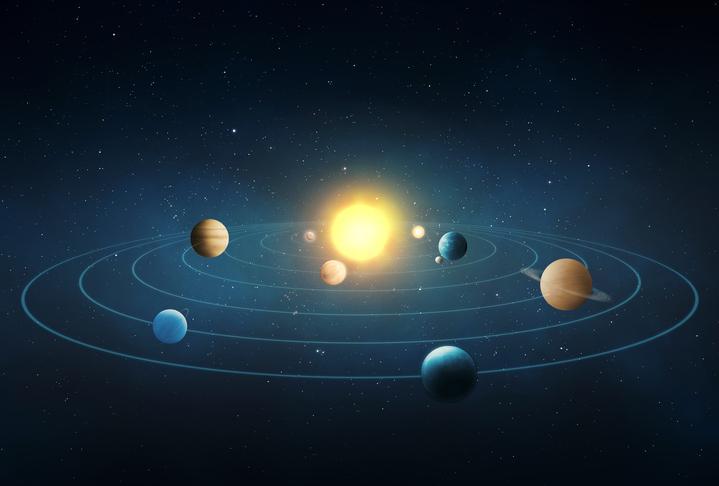What Causes the Earth to Revolve Around the Sun?


The Earth, our home in the vastness of the universe, is a dynamic and vibrant planet in constant motion. The Earth's movements play a fundamental role in our daily lives and the grand tapestry of nature. From its rhythmic rotation on its axis that makes day and night possible, to its graceful dance around the Sun that marks the passing of the seasons. But have you ever wondered about the underlying reasons behind this captivating phenomenon? And more importantly, what implications and impacts does this celestial dance have on our planet and all its inhabitants?
In this article, brought to you by thedailyECO, we explore the causes of the Earth's orbit around the sun and its profound effects on our world.
Why do the planets orbit or revolve around the Sun?
Approximately 300 years ago, the renowned English scientist Isaac Newton provided an explanation for this fascinating phenomenon. Through his groundbreaking discoveries, Newton revealed the reasons behind the planets' orbits around the Sun and the connection between these celestial movements and the trajectory of objects thrown upwards on Earth.
His work, published in his book "Mathematical Principles of Natural Philosophy" (also known as the "Principia"), laid the foundation for classical mechanics and revolutionized our understanding of the physical world. Newton's laws of motion and his law of universal gravitation have been extensively validated through observations and experiments and continue to be fundamental principles in physics and astronomy.
According to Newton's law, the gravitational force exerted by the Sun attracts the entire planetary system, just as the Earth's gravity pulls everything downwards. This force keeps us tethered to the ground and prevents objects from floating off into space.
The strength of gravitational attraction between objects is directly proportional to their mass, meaning that heavier objects exert a stronger pull. However, one might wonder why planets don't just fall directly into the Sun and burn up. The explanation lies in their extraordinary lateral movement - their orbit around the Sun.
Think of an iron ball tied to a string. When we swing the ball while pulling it towards our hand, the ball doesn't just fall straight into our hand. Instead, it keeps moving in a circular path due to the swing. Similarly, planets orbit the Sun in a similar way. Their continuous circular movement, or orbit, balances the gravitational pull from the Sun. This graceful interplay of gravity and lateral motion keeps the planets in their orbits, preventing them from crashing into the Sun or veering off in a straight line.

How does the Earth move around the Sun?
The Earth's movement around the Sun is called translational movement. It orbits the Sun in a nearly circular path, causing changing seasons and marking days, months, and years on our calendar.
The Earth completes this orbit in about 365 days and 6 hours. We count 365 days as one year in our calendar, but those extra 6 hours add up. Every four years, we add one extra day at the end of February to catch up, creating a leap year with 366 days.
During this heliocentric orbit, the Earth travels at an incredible speed of about 30 kilometers per second. On average, it stays about 150 million kilometers away from the Sun. The Earth's orbit isn't a perfect circle; it's an ellipse, stretching around 940 million kilometers in total.
Make sure to read this other article that explores the concept of celestial bodies.
What causes day and night on Earth?
As the Earth orbits the Sun, it also undergoes rotational movement around its axis. This rotation occurs in an anti-clockwise direction when observed from the perspective of the polar star and takes approximately 24 hours to complete, resulting in a day.
However, over time, this rotational movement has been gradually slowing down due to the influence of the Moon on Earth's tides. In the distant past, during the time of dinosaurs, a full day on Earth lasted about 22 hours.
In summary, the Earth's rotational movement contributes to the cycle of day and night, and its duration has been influenced by various factors, including the gravitational forces from the Moon.
Don't miss this intriguing article that explains the presence of craters on the surface of the Moon.
Effects of the earth movements
The effects of terrestrial movements are profound, shaping the very fabric of life on Earth in various ways. These movements have a significant impact on our world, influencing everything from the measurement of time through days and years to the creation of Earth's magnetic shield and the formation of our planet's physical features.
One of the essential effects of Earth's rotation is the Coriolis effect. This phenomenon causes moving air masses in the Northern Hemisphere to deviate to the left and those in the Southern Hemisphere to deviate to the right. As a result, it influences the rotation of high and low-pressure systems, leading to the formation of distinct weather patterns and ocean currents.
Additionally, Earth's rotational motion contributes to its unique geoidal shape. Instead of being a perfect sphere, our planet is slightly flattened at the poles and bulges at the equator, forming what we call a geoid. This shape arises from the balance between gravitational forces and the centrifugal force caused by rotation.
Moreover, Earth's rotation plays a pivotal role in generating its protective magnetic field. The movement of molten iron and nickel in the outer core generates electrical currents, which, in turn, create the magnetic lines encompassing the Earth. This magnetic shield shields us from the harmful effects of solar radiation and solar storms.
You might be interested in another article that delves into the reason the sun appears yellow.

If you want to read similar articles to What Causes the Earth to Revolve Around the Sun?, we recommend you visit our Facts about Earth and the universe category.







